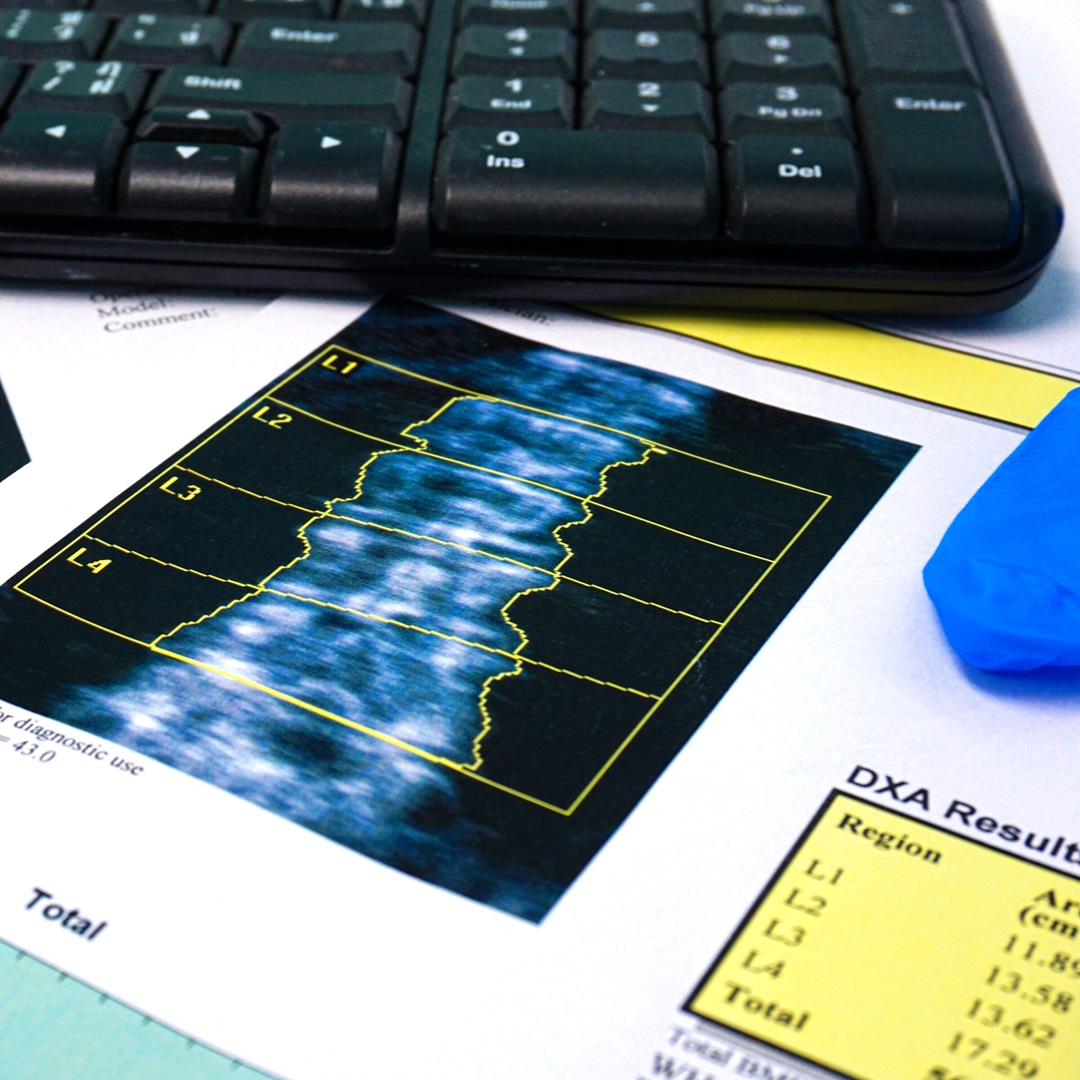by Stephen Luther, M.D.
Share

Advertisements warn us about a lurking silent menace that sends shivers through our bones as the osteoporosis industry induces a crippling fear over our bone density. Yet, how much of what we hear is based on facts, and how much is driven by other interests? Before you rush in for a bone density scan, avoid an osteoporosis diagnosis scam by using the power of knowledge to decipher scientific flaws from genuine health concerns.
Not everyone with low bone density will suffer from fractures, and not all fractures are because of osteoporosis. At Symbios Health, we advocate for informed, evidence-based approaches to wellness and offer strategies to maintain healthy bones and stand firm in the truth.
Osteoporosis: Who, What, When, and Where
- Who: Osteoporosis primarily affects women, especially postmenopausal women with declining estrogen levels. It can also affect men, albeit to a lesser extent.
- What: Osteoporosis is a condition characterized by weakened bones. In the past, a diagnosis of osteoporosis required symptoms such as a bone fracture or trauma. Today, no symptoms are necessary for a diagnosis because doctors use dual X-ray absorptiometry (DXA) to measure the density of mineral content in bones. Research demonstrates that, without symptoms, misdiagnosis is common because bone density scans do not consider bone quality and do not prove a weakness in bones. Osteopenia includes patients with a bone density close to osteoporosis (characterized by a standard deviation of 1.0 to 2.5 below osteoporosis).
- When: Older adults are mostly diagnosed with osteoporosis. However, the portrayal of osteoporosis as an inevitable part of aging for all women is misleading. Many people diagnosed with low bone density never experience fractures, and the focus on bone density alone overlooks other crucial factors, such as bone quality and overall health.
- Where: Most cases of true osteoporosis are found in people with multiple risk factors for poor bone health that include age (over 85), being inactive, smoking cigarettes, regular alcohol consumption, gender, family history, low body weight, and certain medical conditions (such as Parkinson’s disease, chronic liver disease, or cancer) and certain medications.
The Flaws in Bone Density Scanning
Bone density scanning, particularly dual-energy X-ray absorptiometry (DEXA), is the standard method for diagnosing osteoporosis. However, the following issues call its accuracy into question.
- Variability: The flawed science begins with measurement standards set by a healthy 25-year-old white female. This high standard means nearly every older person’s bone density test can potentially result in a diagnosis of osteoporosis (more than a 2.5 standard deviation below this average) or osteopenia (a 1.0 to 2.5 standard deviation below average).
- Predictive Value: Low bone density alone is a poor predictor of fractures. Many fractures occur in people with average bone density, while many with low bone density never fracture. The fallacy of the bone mineral density, as reported in Clinical Rheumatology, states that the DXA “is not an ideal measure of true bone density; it is not an ideal measure of bone strength; it does not predict fractures well; and it has inherent problems of accuracy and linearity.”
- Overdiagnosis: The use of bone density thresholds can lead to overdiagnosis, labeling many healthy individuals as having osteoporosis, potentially leading to unnecessary treatments and anxiety.
Profiting from Fear: Conflicts of Interest in Diagnosing Osteoporosis
The criteria for diagnosing osteoporosis were established with input from industry-funded researchers, raising questions about the motivations behind the thresholds. A broader definition of osteoporosis increases the number of people diagnosed and, subsequently, the market for medications, as demonstrated in the following three examples
- The World Health Organization has played a significant role in defining osteoporosis and the thresholds for bone density. However, there are concerns about conflicts of interest. The medical article, ‘Selling Sickness,” shows that three drug manufacturers partially funded the study. The pharmaceutical industry’s influence may have led to a broader client base, as the significant changes in the diagnoses of osteoporosis increase the sale of osteoporosis medications.
- The article “How a Bone Disease Grew to Fit the Prescription,” reports that Merck, the pharmaceutical company that manufactures Fosamax to treat osteoporosis, created a nonprofit called the Bone Measurement Institute. This nonprofit joined the DXA scanners to push for insurance coverage to test bone mineral density. Once DXA scanners increased the diagnoses of osteoporosis and osteopenia, the sales of Fosamax significantly increased.
- A cohort study in 2020 “did not find any protective effect of milk and dairy intake on risk of osteoporosis and hip fracture.” Additionally, the systematic review did not find any improvement from calcium supplements.
Exercise: Symbios’ Proven Strategy for Healthy Bones
Amid the controversies and potential conflicts of interest, one fact remains undisputed: exercise is one of the most effective ways to maintain healthy bones. Be Symbios Smart by understanding the following reasons for exercising and applying exercise as part of your healthy lifestyle.
- Weight-Bearing Activities: Exercises such as walking, running, and weightlifting stimulate bone formation and increase bone density.
- Improved Balance and Coordination: Regular physical activity and functional fitness enhance muscle strength and balance, reducing the risk of falls and fractures.
- Complete Health Benefits: Exercise contributes to overall health, reducing the risk of various chronic diseases that can impact bone health, such as diabetes and cardiovascular disease.
- Hormonal Balance: Physical activity can help maintain hormonal balance, which is crucial for bone health, particularly in postmenopausal women.
SymbiosFIT has professional coaches who specialize in functional fitness. Our welcoming classes or personal training sessions can help you form healthy bones and a healthy life.
If you have osteoporosis-related questions, please talk to our team of experts at Symbios Health. Our goal is to help you take control of your well-being naturally and effectively.





